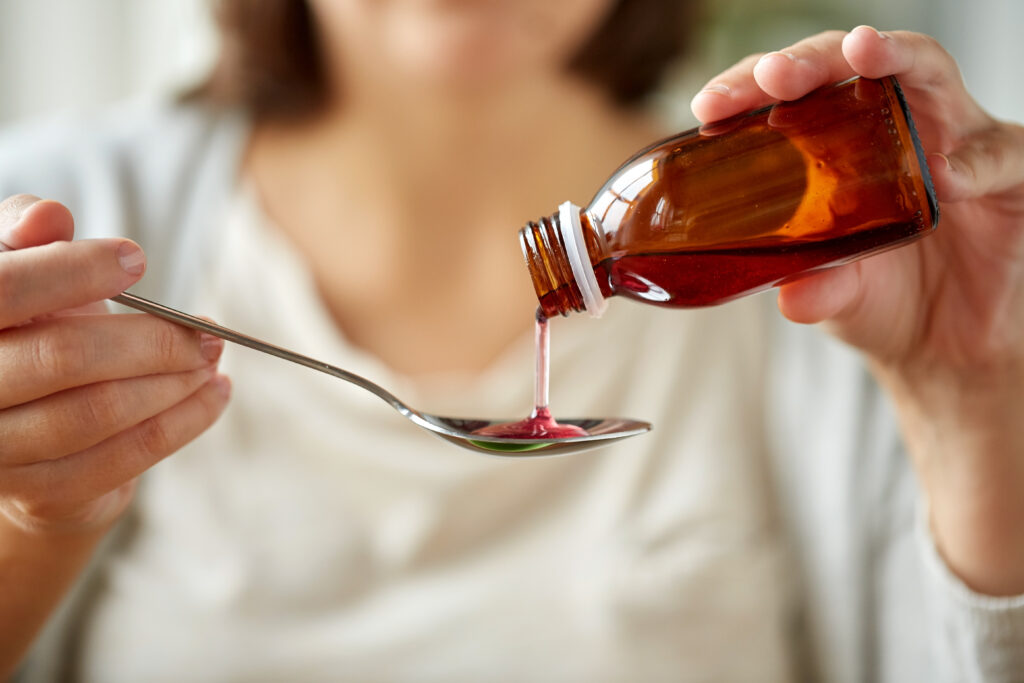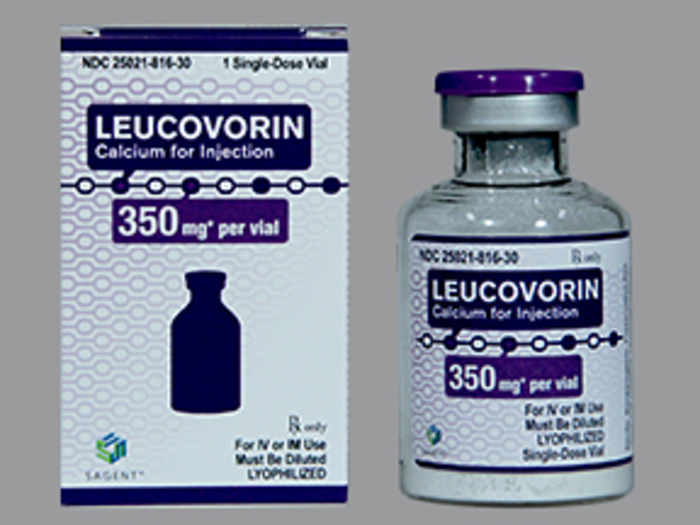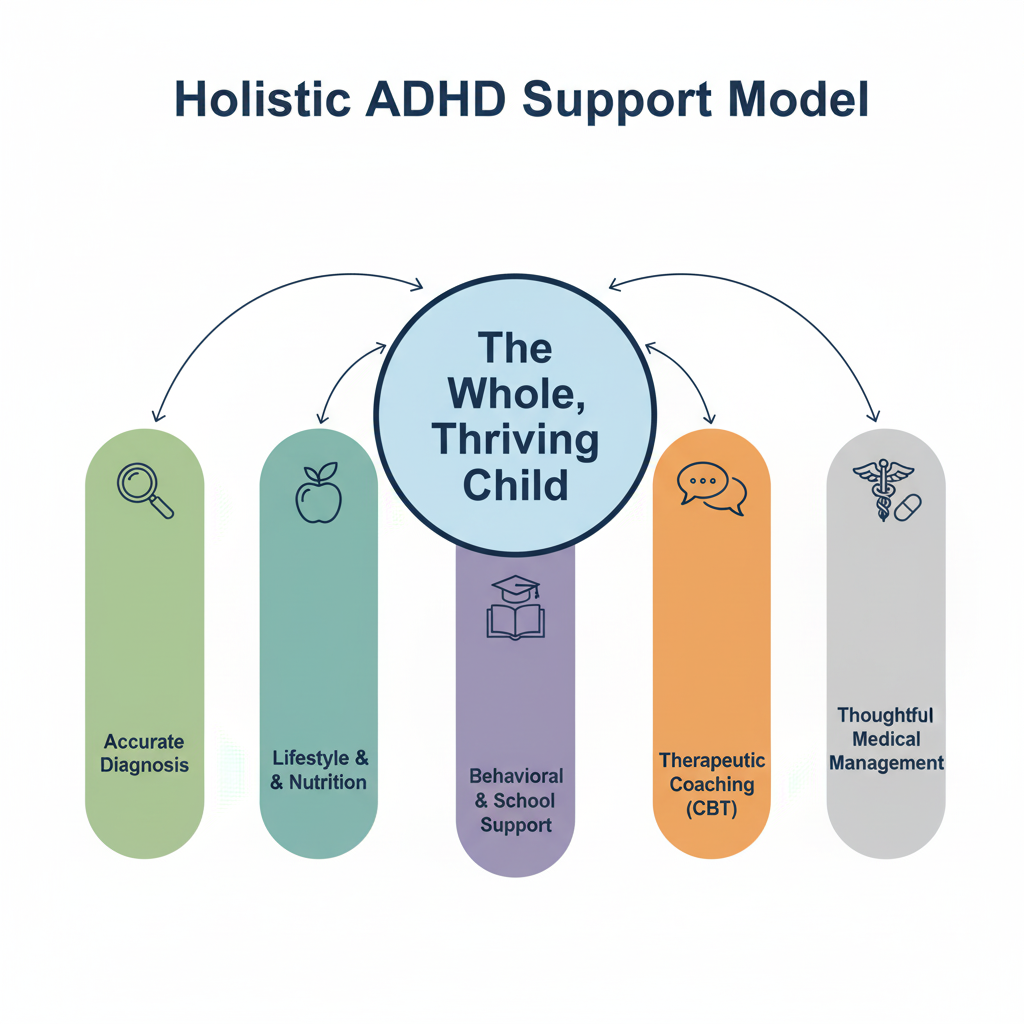As a parent, few things are more unsettling than seeing your child in discomfort from a fever or pain. Your first instinct is to help them feel better, and for many, that means reaching for a bottle of children’s acetaminophen, a common over-the-counter medication. Understanding the correct children’s acetaminophen dosage is essential for their safety and comfort. While acetaminophen is a safe and effective way to reduce fever and alleviate pain, giving the correct dose is absolutely critical. An incorrect dose, whether too little or, more dangerously, too much, can be ineffective or even harmful.
Here at Beverly Hills Pediatrician, we know that navigating medication can be confusing. From deciphering labels to getting a fussy toddler to swallow the liquid, the process can be stressful. This guide will empower you with the knowledge and confidence to administer children’s acetaminophen effectively, ensuring your child gets the relief they need, safely.
Understanding Children’s Acetaminophen Dosage by Weight
The single most important factor in determining the correct dose of children’s acetaminophen is your child’s weight. While many medication labels include an age-based dosing chart, using your child’s current weight is far more accurate and is the gold standard recommended by pediatricians.
This is because a child’s metabolism and body mass vary significantly. A two-year-old who weighs 25 pounds will require a different dose than a two-year-old who weighs 35 pounds. Relying solely on age can lead to either underdosing, which will not provide relief, or overdosing, which can be toxic to the liver.
Before You Reach for the Medicine Bottle, Do This First:
- Find the Scale: If you do not know your child’s most recent weight, use a home scale or recall their last check-up with us.
- Read the Label: Find the dosing chart on the bottle. It will provide the recommended dosage in milliliters (mL) or chewable tablets based on weight.
- Calculate the Dose: Look up your child’s weight on the chart. If their weight falls between two categories, always go with the lower dose.
- Confirm with Your Pediatrician: For children under the age of two months, it is crucial to consult with your pediatrician before giving any medication. Fever in very young infants can be a sign of a serious infection and should be evaluated by a doctor.
Understanding the Medicine Itself: Concentrations and Forms
A frequent source of medication error is confusion over different product concentrations. A few years ago, there were two main concentrations of liquid acetaminophen on the market for infants and children, which led to significant confusion and accidental overdoses. Fortunately, the industry has now standardized the concentration of single-ingredient liquid acetaminophen to 160 mg/5 mL.
However, you must still read the label every single time you give your child medication. Here is what you need to know about the different forms:
Common Forms of Children’s Acetaminophen
- Liquid Suspension (160 mg/5 mL): This is the most common form for infants and young children. It’s easy to administer and allows for precise, weight-based dosing. The label will clearly state “160 mg per 5 mL.”
- Chewable Tablets: These are often available in 80 mg and 160 mg strengths. They are suitable for older children who can chew and swallow tablets safely. Make sure you are using the correct strength for your child’s weight, as the number of tablets will change.
- Dissolvable Powders/Melt-aways: You can mix these with a small amount of food or liquid, or place them directly on the tongue. They are a good option for children who struggle with swallowing liquids or tablets.
- Suppositories: Administered rectally, suppositories are a lifesaver when your child is vomiting and cannot keep oral medication down. They come in various strengths (80 mg, 120 mg, etc.), and the dosing is still based on weight.
A note on adult vs. children’s acetaminophen: Never, under any circumstances, give your child an adult version of acetaminophen. The concentration is far too high and can easily lead to a dangerous overdose.
Children’s Acetaminophen Dosage Chart

This chart provides a quick reference for children’s acetaminophen dosage based on weight. Dosages should always be based on your child’s weight, not age. Do not give to a child under 2 months of age unless directed by your doctor. The maximum dose is 5 doses in a 24-hour period.
| Weight (lbs) | Infant/Children’s Liquid Suspension (160 mg/5 ml) | Chewable or Meltaway Junior (160 mg) | Chewable or Meltaway (80 mg) | Suppository (120 mg) | Suppository (325 mg) | Suppository (80 mg) |
| 0-10 lbs | 1/4 tsp (1.25 ml) | — | — | — | — | — |
| 11-13 lbs | 2 ml | — | 1 tablet | — | — | 1 tablet |
| 14-20 lbs | 1/2 tsp (2.5 ml) | — | 1.5 – 1.75 tablets | — | — | 1.5 – 1.75 tablets |
| 21-30 lbs | 4 ml | 1 tablet | 2.5 tablets | — | — | 2.5 tablets |
| 31-40 lbs | 1 1/4 tsp (6.25 ml) | 1.5 tablets | 3 tablets | 1 suppository | — | 3 tablets |
| 41-50 lbs | 1 1/2 tsp (7.5 ml) | 2 tablets | 4 tablets | — | — | 4 tablets |
| 51-60 lbs | 2 tsp (10 ml) | 2.5 tablets | 5 tablets | — | 1 suppository | 5 tablets |
Please note: For accurate dosing, always use the measuring device provided with the medication. Do not use kitchen spoons, which are not standardized.
Tips for Administering the Correct Children’s Acetaminophen Dosage
Once you have determined the correct dose, the next challenge is getting your child to take it. This can be a battle, but a few simple strategies can make it a smoother experience.
- Use the Right Tool: Always use the dosing syringe, dropper, or cup that comes with the medicine. These are specifically calibrated for accurate measurements. Never use a kitchen spoon, as their sizes vary widely and can lead to dosing errors.
- Aim for the Cheek: When administering liquid medicine, aim the syringe or dropper toward the inside of your child’s cheek. This helps prevent them from spitting it out and reduces the risk of gagging or choking. Administer the medicine slowly and in small squirts, allowing your child to swallow in between.
- Do Not Mix with Bottles: Avoid mixing medicine into a full bottle of milk or juice. If your child does not finish the bottle, they will not get the full dose, and you will not know how much they actually consumed. A small amount of a preferred drink can be used to wash it down after the dose is given.
- Be Patient: It can take 30 to 60 minutes for acetaminophen to start working. Do not be tempted to give a second dose if the fever does not disappear immediately. The goal is to make your child more comfortable, not necessarily to eliminate the fever completely.
Children’s Ibuprofen (Advil and Motrin) Dosing Chart
This chart is for Ibuprofen, which you should not give to children under 6 months of age. Please check the concentration of your product (50mg/1.25ml or 100mg/5ml) before dosing.
| Age | Weight (lbs) | Concentrated Infant Drops (50mg/1.25ml) | Children’s Liquid Susp. (100mg/5ml) | Jr Chewable tabs (100mg) |
| 6-9 months | 12-15 lbs | 1.25 ml | 2.5 ml (1/2 tsp) | 1/2 tab |
| 9-12 months | 16-21 lbs | 1.875 ml | 3.75 ml (3/4 tsp) | 3/4 tab |
| 12-23 months | 22-32 lbs | 2.5 ml | 5 ml (1 tsp) | 1 tab |
| 2-3 years | 33-40 lbs | — | 7.5 ml (1 1/2 tsp) | 1 1/2 tab |
| 4-5 years | 41-54 lbs | — | 10 ml (2 tsp) | 2 tabs |
| 6-8 years | 55-64 lbs | — | 12.5 ml (2 1/2 tsp) | 2 1/2 tabs |
| 9-10 years | 65-88 lbs | — | 15 ml (3 tsp) | 3 tabs |
Frequently Asked Questions
No, it is generally not recommended to give both medications simultaneously. However, in some cases, your pediatrician might suggest alternating them every 3-4 hours to manage a high or persistent fever. Always consult your doctor before doing so.
You can give a dose of acetaminophen every 4 hours as needed, but you should not exceed 5 doses in a 24-hour period.
If your child is actively vomiting, you can administer an acetaminophen suppository (rectally), which is an excellent option to ensure they receive the medication and find relief.
Acetaminophen typically starts to reduce fever and pain within 30 to 60 minutes of being administered.
No. Do not give an extra dose. If the fever persists or your child seems particularly unwell after the recommended dose, it’s time to call our office to seek professional medical advice.
No. Never use a kitchen spoon, as their sizes vary widely and can lead to incorrect dosing. Always use the calibrated syringe, dropper, or dosing cup that comes with the medicine bottle.
Absolutely not. Adult acetaminophen has a much higher concentration and is not safe for children, even in smaller amounts. It’s easy to make a dosing error that could lead to a dangerous overdose.
Only if they are over 2 months of age and you have consulted with a doctor. Fever in infants under 2 months requires immediate medical evaluation.
If you believe you have given an incorrect dose, do not panic. Call our office immediately, or contact the Poison Control Center at 1-800-222-1222.
A child’s body processes medication based on their size and metabolism. A weight-based dose ensures that the amount of medicine is tailored to your child’s specific body mass, making it both safer and more effective than a dose based only on age.
Confident Care for Your Child
The most important takeaway is that proper children’s acetaminophen dosage is critical for your child’s health and safety. Always use a calibrated dosing tool, and never guess the dose. For any lingering questions or concerns, do not hesitate to reach out to our team at Beverly Hills Pediatrician. We are here to support families in Beverly Hills, providing expert care every step of the way.
For more information and to schedule an appointment, please visit our website:




